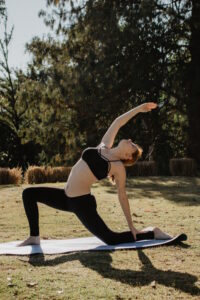
As a leading expert in Pilates for Rehabilitation from a physiotherapist’s perspective, I am passionate about shedding light on the numerous benefits that Pilates offers as a powerful tool in the rehabilitation process. Pilates, when incorporated into physiotherapy programs, can significantly enhance recovery, improve mobility, and promote overall well-being for patients. In this comprehensive guide, we will explore the perspective of physiotherapists on Pilates, the ways Pilates aids in rehabilitation, its prevalence in rehabilitation clinics, and the concept of rehabilitative Pilates.
Do physiotherapists recommend Pilates?
Yes, many physiotherapists highly recommend Pilates as a part of their rehabilitation programs. The controlled and low-impact nature of Pilates exercises makes it a safe and effective option for individuals recovering from injuries, surgeries, or managing chronic conditions. Pilates can be tailored to address specific rehabilitation goals, and it complements physiotherapy by focusing on core strength, flexibility, and body alignment.
Physiotherapists often integrate Pilates exercises into their treatment plans to target specific muscle groups, improve joint stability, and enhance overall functional movement. The emphasis on proper body mechanics and alignment in Pilates aligns with the goals of physiotherapy, making it a valuable addition to rehabilitation programs.
How does Pilates help with rehabilitation?
Pilates offers several benefits that support rehabilitation and complement the efforts of physiotherapy:
1. Core Strengthening: Pilates focuses on strengthening the core muscles, which are crucial for maintaining stability and supporting the spine. A strong core can aid in the recovery of back and neck injuries.
2. Flexibility and Range of Motion: Pilates exercises promote joint mobility and flexibility, essential for regaining full range of motion after injuries or surgeries.
3. Balance and Coordination: Pilates incorporates exercises that challenge balance and coordination, which can help individuals recovering from musculoskeletal injuries regain stability.
4. Mind-Body Connection: Pilates fosters a deep mind-body connection, promoting body awareness and proper muscle engagement during movements, minimizing the risk of re-injury.
5. Postural Alignment: Pilates emphasizes proper postural alignment, which is crucial for individuals with post-surgical or musculoskeletal issues.
Why Pilates is used in so many rehabilitation clinics?
Pilates is used in many rehabilitation clinics because of its versatility and effectiveness in addressing a wide range of injuries and conditions. Physiotherapists recognize the value of incorporating Pilates into their treatment plans due to its numerous benefits, including core strengthening, flexibility improvement, and improved body mechanics.
The adaptability of Pilates exercises allows physiotherapists to customize sessions to suit the individual needs of their patients, making it a suitable option for people of varying ages, fitness levels, and rehabilitation goals.
Moreover, Pilates promotes a holistic approach to rehabilitation, focusing on both physical and mental well-being. The mindful aspect of Pilates can reduce stress and anxiety, positively influencing the recovery process.
What is rehabilitative Pilates?
Rehabilitative Pilates, also known as Clinical Pilates or Pilates for Rehabilitation, is a specialized form of Pilates that is tailored specifically for individuals recovering from injuries or managing chronic conditions. This approach involves working closely with physiotherapists or other healthcare professionals to develop a customized Pilates program that addresses the unique needs and goals of the patient.
Rehabilitative Pilates typically involves a combination of mat exercises and the use of Pilates equipment, such as the Reformer, Cadillac, and Stability Chair. These exercises are chosen and modified based on the patient’s condition, ensuring a safe and effective rehabilitation experience.
The focus of rehabilitative Pilates is on promoting proper body alignment, core stability, and functional movement patterns. It is often incorporated into physiotherapy sessions to support the rehabilitation process and enhance overall recovery.
Summary
From a physiotherapist’s perspective, Pilates for Rehabilitation is a highly recommended and effective approach to support recovery and promote overall well-being. Physiotherapists often integrate Pilates exercises into their treatment plans to target specific muscle groups, improve flexibility, and enhance balance and coordination. The versatility of Pilates, coupled with its emphasis on core strength and mindful movement, makes it a valuable addition to rehabilitation clinics worldwide. Rehabilitative Pilates, a specialized form of Pilates, is customized to meet the unique needs and goals of individual patients, promoting proper body mechanics and functional movement patterns. By incorporating Pilates into their rehabilitation programs, physiotherapists can help patients achieve optimal recovery and improve their quality of life.